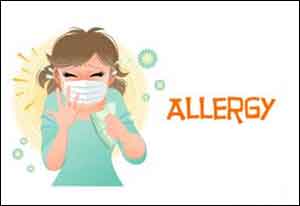- Home
- Editorial
- News
- Practice Guidelines
- Anesthesiology Guidelines
- Cancer Guidelines
- Cardiac Sciences Guidelines
- Critical Care Guidelines
- Dentistry Guidelines
- Dermatology Guidelines
- Diabetes and Endo Guidelines
- Diagnostics Guidelines
- ENT Guidelines
- Featured Practice Guidelines
- Gastroenterology Guidelines
- Geriatrics Guidelines
- Medicine Guidelines
- Nephrology Guidelines
- Neurosciences Guidelines
- Obs and Gynae Guidelines
- Ophthalmology Guidelines
- Orthopaedics Guidelines
- Paediatrics Guidelines
- Psychiatry Guidelines
- Pulmonology Guidelines
- Radiology Guidelines
- Surgery Guidelines
- Urology Guidelines
Antibiotics use in infancy tied to allergic disease in childhood: JAMA Pediatrics

USA: Exposure to antibiotics during infancy increases the risk of allergy in childhood, finds a recent study published in the journal JAMA Pediatrics. This occurs as antibiotic administration negatively affects the microbiome thereby decreasing bacterial diversity. Allergic diseases include food allergies, asthma or dermatitis.
According to the authors, the risk increases with increasing the types of antibiotics used and the association was seen with all antibiotics assessed in this study -- penicillin, cephalosporin, sulfonamide or macrolide.
Sidney E. Zven, Uniformed Services University of the Health Sciences, Bethesda, Maryland, and colleagues determined whether exposure to multiple antibiotic classes in infancy is associated with a higher risk of developing an allergic disease in early childhood.
This retrospective cohort study involved an analysis of prescription data for 798,426 children (beneficiaries of the US armed forces insurance). The authors defined exposure as any dispensed prescription for penicillin, penicillin with a β-lactamase inhibitor, cephalosporin, sulfonamide, or macrolide drugs in the first 6 months of life. They looked for the presence of any allergic disease, such as food allergy, anaphylaxis, asthma, atopic dermatitis, allergic rhinitis, allergic conjunctivitis, or contact dermatitis.
Read Also: Asthma exacerbations in pregnancy up complication risk in mother and child
Key findings of the study include:
- The most commonly prescribed class of antibiotics was penicillins (59.5%).
- Most children in this cohort (83.3%) were not prescribed any antibiotic.
- 13.7% were prescribed 1 class, 2.5% were prescribed 2 classes, 0.44% were prescribed 3 classes, and 0.06% were prescribed 4+.
- Each class of antibiotics was tied to an increased risk for allergy in childhood.
- The risk was lowest with sulfonamide (1.06) and highest with penicillin (1.30).
- With each additional class, these risks increased for each type of allergy (e.g., food, atopic dermatitis, anaphylaxis, allergic rhinitis).
- These associations persisted even when adjusted for the total days prescribed.
Read Also: ‘Good’ bacteria may prevent and reverse food allergy, finds study
The researchers noted "potential reverse causality" as a potential limitation (i.e., infants who were more susceptible to developing the allergic disease might also be more susceptible to developing bacterial illness), they nonetheless concluded that "perturbation of the microbiome may be a risk factor for the development of the allergic disease."
The study, "Association Between Use of Multiple Classes of Antibiotic in Infancy and Allergic Disease in Childhood," is published in the journal JAMA Pediatrics.

Disclaimer: This site is primarily intended for healthcare professionals. Any content/information on this website does not replace the advice of medical and/or health professionals and should not be construed as medical/diagnostic advice/endorsement or prescription. Use of this site is subject to our terms of use, privacy policy, advertisement policy. © 2020 Minerva Medical Treatment Pvt Ltd